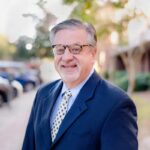Even though he does not always drink Dos Equis, Bart Danielsen is quite possibly the Most Interesting Man in the World of Education Policy today. Or at least the Most Unlikely Man.
Danielsen is a business school professor who specializes in real estate. He’s an expert in housing patterns, not pedagogical practices. And when Danielsen isn’t fielding questions about finance (as the author of a best-selling textbook on the topic), the University of Florida alum is often exploring ways to spur new development in communities that desperately need economic revitalization.
Which is how Danielsen first got interested in education choice.
Several years ago, Danielsen began seeing a pattern that he found extremely interesting: When localities adopted school choice scholarships offering universal eligibility, they experienced significant economic improvement, particularly in less affluent neighborhoods. That’s because universal school choice scholarships removed an anchor weighing down distressed parts of town — the requirement that all families living there must attend the local public school (or else forfeit access to the per-pupil funding available for their children’s education).
Removing this anchor made these less affluent areas more attractive to middle-income parents. As a result, upwardly mobile families with historic ties to the neighborhood increasingly chose to live there. As did couples that had purchased a starter home in the community who didn’t want to uproot and start all over somewhere else. The increase in the stable, middle-income population meant that these once-distressed areas could now attract new businesses (banks, grocery stores, etc.) and more jobs to their side of town.
The fact that universal scholarships disproportionately benefit less-affluent neighborhoods may seem counterintuitive. But freeing middle-income parents to consider living in more affordable areas (via school choice scholarships) leads to greater economic diversity in neighborhood housing patterns.
Danielsen’s research confirms something every suburban Realtor has long surmised: the most significant factor affecting middle-income housing decisions is not proximity to work — it is proximity to good schooling. The reason middle-income families care so much about location-location-location when they go to buy a home is because they are greatly concerned about their kids’ education-education-education.
Indeed, Danielsen reports, “Many middle-income families who currently move to the suburbs when their children reach school age would remain in more diverse and convenient city environments if they had more educational options.”
Danielsen’s research has a number of important implications for state and local education policymakers — and for business, religious and community leaders looking to revitalize economically distressed areas. At the very least, this research strongly argues for expanding school choice scholarship eligibility to include all families living in what Danielsen likes to call “ED Zones” (Economic Development Zones). It also argues for prioritizing these families over similarly situated families living elsewhere, at least until full school choice scholarships are available for everyone everywhere.
Moreover, Danielsen’s research argues for approaching school choice scholarship expansion with a sense of urgency, because neighborhood transformations typically do not occur overnight. And every day that lawmakers delay the expansion of scholarship eligibility to a wider population is a day that they (inadvertently) hinder the revitalization of neighborhoods that would benefit greatly from an increased number of stable, middle-income households.












